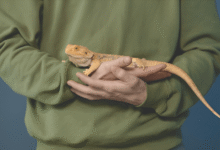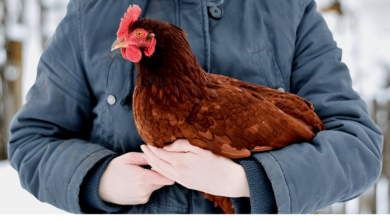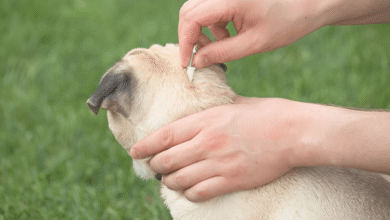
UK Pet First Aid: Must-Know Tips for Owners
UK Pet First Aid: Essential tips for owners to handle emergencies, from poisoning to CPR. Keep your pets safe with expert advice.
UK Pets First Aid is a vital skill for every pet owner, ensuring the safety and well-being of beloved animals during emergencies. In the UK, where are considered cherished members of the family, accidents and sudden illnesses can happen unexpectedly. From choking hazards to poisoning by common household items, being prepared with basic first aid knowledge can make all the difference in critical moments. This article explores essential first aid techniques, seasonal risks, and practical tips tailored to the UK environment, empowering owners to act swiftly and confidently when their pet need help the most.
The UK’s unique landscape and lifestyle present specific challenges for pet owners. Urban areas pose risks like traffic accidents, while rural settings may expose pet to toxic plants, wildlife, or harsh weather conditions. Seasonal changes bring additional hazards, such as antifreeze poisoning in winter or heatstroke in summer. By understanding these risks and learning how to respond effectively, pet owners can provide immediate care that stabilizes their pets until professional veterinary assistance is available. This guide aims to equip UK pet owners with the knowledge and tools needed to handle emergencies, ensuring their furry companions remain safe and healthy.
Expanded Article
The bond between Britons and their is profound, with dogs and cats often regarded as family members. Yet, many owners feel unprepared when faced with emergencies like choking, burns, or fractures. In the UK, factors such as urban traffic, toxic flora (e.g., lilies, azaleas), and seasonal risks like antifreeze leaks in winter amplify the need for vigilance. Proactive first aid knowledge not only stabilizes pet but also bridges the gap until professional veterinary care is accessible, particularly in rural areas where clinics may be distant.
One of the most common emergencies is poisoning. UK households often unknowingly harbor dangers: chocolate, grapes, and xylitol (found in sugar-free gum) are toxic to dogs, while lilies are lethal to cats. Seasonal threats include rodenticides in autumn and antifreeze puddles in winter, both appealing to curious pet. Immediate action involves identifying the toxin, contacting a vet, and, if advised, inducing vomiting. Never administer human medications unless directed—a mistake that could exacerbate the issue.
Choking is another critical scenario
Dogs may gag on toys or bones, while cats might swallow string. Signs include pawing at the mouth, distress, or blue-tinged gums. Safely restraining the pets and inspecting the airway is crucial. For small objects, gentle removal with pliers may work, but avoid pushing debris deeper. If unresolved, the Heimlich maneuver tailored for pets—compressions behind the ribcage—can dislodge obstructions. Post-incident, even if successful, a vet visit is essential to check for internal damage.
Wounds and bleeding require calm assessment. Minor cuts can be cleaned with saline and dressed, but deep injuries demand pressure with a clean cloth to stem bleeding. UK owners should be wary of puncture wounds from animal fights or garden tools, which risk infection. Avoid tourniquets unless absolutely necessary, and always keep a pets-specific first aid kit stocked with gauze, bandages, and antiseptic wipes.
Fractures and sprains often result from falls or collisions. Immobilizing the injured limb with a makeshift splint (using a magazine or stick) can prevent further damage during transit. However, improper handling may worsen pain—use a towel as a stretcher for larger dogs. Notably, UK vets emphasize never administering human painkillers like ibuprofen, which are toxic to pets.
CPR for pets is a lifesaving skill
CPR for pets is a lifesaving skill when breathing or heartbeat ceases. The process varies by size: for dogs, compress the chest at 100–120 beats per minute, alternating with rescue breaths. Cats require gentler compressions with one hand. Courses endorsed by the RSPCA or British Veterinary Association provide hands-on training, as improper technique can cause harm.
Seasonal hazards in the UK pose unique challenges. Summer brings heatstroke risks—never leave in cars, and cool them gradually with wet towels. Blue-green algae in ponds thrives in warm weather, causing fatal toxicity if ingested. Winter’s antifreeze, sweet-tasting but deadly, necessitates prompt cleanup of garage spills. Christmas hazards include tinsel, which can obstruct intestines, and festive foods like mince pies (toxic raisins).
Creating a Pet First Aid Kit tailored to UK pet needs is vital. Include vet wrap, tweezers, a digital thermometer (normal range: 38–39.2°C), and emergency contact numbers—your vet, the nearest 24-hour clinic, and the Animal Poison Line (01202 509000). Add a pet carrier blanket for shock management. UK pet pharmacies stock saline solution and antiseptics, but avoid hydrogen peroxide unless vet-recommended.
When to Seek Veterinary Help is a judgment call. Persistent vomiting, seizures, or labored breathing demand immediate attention. In remote areas, familiarize yourself with emergency services; some UK mobile networks lack coverage, so plan transport routes in advance. Pets insurance, held by 25% of UK pet owners, can alleviate financial stress during crises.
Read More: Best Training Schools & Behaviourists for Pets in the UK
Conclusion
Pets are an integral part of many households in the UK pet, bringing joy, companionship, and love to their owners. However, just like humans, pet can face emergencies such as accidents, injuries, or sudden illnesses. UK pet First Aid is a crucial skill that every pet owner should possess to ensure the safety and well-being of their furry friends. From knowing how to handle choking incidents to recognizing the signs of poisoning, being prepared can make a significant difference in critical situations. This article provides essential tips and guidance to help UK pet owners respond effectively to emergencies, ensuring their receive the best possible care until professional veterinary help is available.
The UK’s unique environment, with its mix of urban and rural settings, presents specific challenges for UK pet owners. Urban areas may expose to risks like traffic accidents or toxic substances, while rural areas can bring hazards such as wildlife encounters or harmful plants. Additionally, seasonal changes introduce dangers like antifreeze poisoning in winter or heatstroke in summer. By understanding these risks and learning basic first aid techniques, pet owners can act confidently and decisively during emergencies. This guide aims to empower UK pet owners with the knowledge and tools they need to protect their pet, ensuring they remain safe, healthy, and happy.
FAQs
What items are essential in a UK Pet First Aid kit?
Include gauze, adhesive tape, saline solution, digital thermometer, tweezers, vet’s contact details, and a blanket. Add a muzzle for safety, as even gentle pet may bite when in pain.
How do I perform CPR on my dog?
Lay the dog on its side, compress the chest (1/3–1/2 its width) at 100–120 beats per minute. After 30 compressions, give two rescue breaths via the nose. Continue until breathing resumes or vet help arrives.
Are human first aid supplies safe for pets?
Some, like saline and gauze, are safe. Avoid painkillers (e.g., paracetamol) and antiseptics like tea tree oil without veterinary advice.
What plants are toxic to pet in UK Pet gardens?
Lilies, daffodils, azaleas, and foxgloves are common. Indoors, avoid sago palms and poinsettias.
Where can I find a pet first aid course in the UK?
The RSPCA, Blue Cross, and St John Ambulance offer courses. Online options are available, but in-person training provides hands-on practice.







